Ronesa Aveela's Blog, page 8
May 11, 2022
Magical Midsummer Herbs
Here’s a little about the meaning behind the 77½ Magical Healing Herbs book. Today, we look at the half herb.
“On Eniovden (Midsummer’s Day), the stars fly down, infusing herbs and water with magical healing power.”
Every year on June 24, I remember these words spoken by my grandmother. She understood the power of herbs and used them to heal soul and body, protect the home and family, and bring fertility and prosperity to the household.

“There is an herb for every illness, and the half for all unknown.”
I never fully understood the meaning of the “half” herb as a child—and not even as an adult. How can you have a half herb? Even if you break it in half, it’s still an herb.
In Bulgaria and other Slavic countries like Ukraine, June 24 is a special day filled with magical rites. Healers gather herbs at dawn, because this is the time when they have the most healing abilities.
In our book, we go into more detail about what the half herb is, and provide folk beliefs and tales about the herb.
Be sure to follow our campaign on Kickstarter, where we’ll keep you updated about the status of the campaign: https://www.kickstarter.com/projects/ronesa-aveela/77-1-2-magical-healing-herbs-the-secret-power-of-herbs?ref=a23n7m
May 10, 2022
Our Kickstarter Campaign Is LIVE
We’re so excited. Our book is finally available for pre-order through our Kickstarter project! If you’ve followed the campaign, then you’ll have already received your email notification from Kickstarter the moment the campaign went live.
Here’s a little bit about what the book is all about.
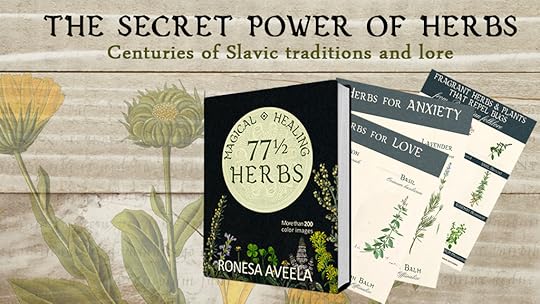
If this sounds like you, then 77½ Magical Healing Herbs is the perfect solution. The book is an introduction to herbs found in a special Midsummer’s wreath. This is an especially enchanting time of year. Among the Bulgarians, the day is called Eniovden.
You may think herbs are only for spicing up food and healing the body and mind, but they have other uses, as well.
Herbs can:
Help prevent hair loss.Eliminate turkey neck.Repel insects.And did you know herbs have magical properties?
Here are a few:
Attract love or repel it.Provide protection from curses and unseen forces.Help an individual find favor in court or success with money matters.And so much more.This unique herbal book is an essential guide for tapping into the power of herbs. It highlights centuries of lore and historical facts about healing and magical uses of herbs from Slavic and other traditions.
Plus, it includes rituals, herbal remedies, and simple recipes. Not only that, you’ll learn about several renowned Bulgarian healers throughout history—from St. Ivan Rilski to Baba Vanga.
One or two high-quality color photos, as well as a full-page botanical illustration, accompany each plant, so anyone can use the book as a field guide in their backyard or when they go foraging.
An index identifies some of the more interesting medical and magical abilities and the herbs that fall under them.
With more than 200 color images and fascinating information, 77½ Magical Healing Herbs is certain to entertain and enlighten you.
***
Don’t forget to pledge early, so you get the EARLY-BIRD PERKS. You can find them at the top of our campaign page: https://www.kickstarter.com/projects/ronesa-aveela/77-1-2-magical-healing-herbs-the-secret-power-of-herbs. But, they’ll be gone after 9 a.m. Eastern time tomorrow (Wednesday, May 11).
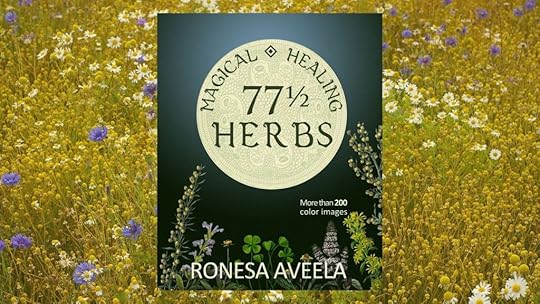 Herbal Prints
Herbal PrintsThe botanical prints are available on merchandise on our Redbubble store. Keep checking back as we add new ones to the list.
Our Store: https://www.redbubble.com/people/ronesaaveela/shop
Rose image: https://www.redbubble.com/i/art-board-print/Rose-Botanical-by-RonesaAveela/105192854.NVL2T
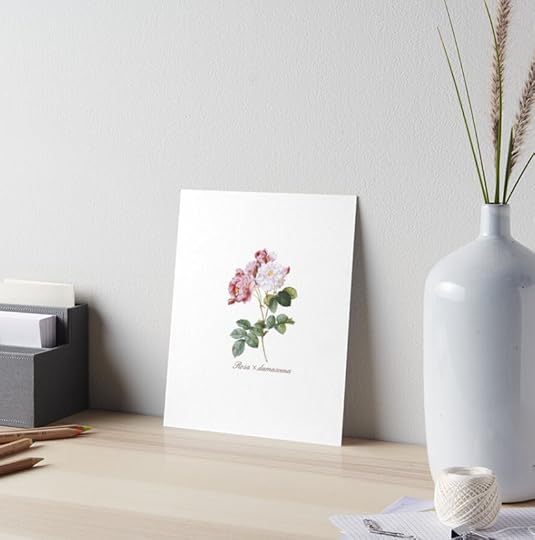
May 9, 2022
A Sneak Peek at the Early-Bird Campaign Perks
Our Kickstarter campaign for 77½ Magical Healing Herbs will launch within 24 hours!
So, we’ll be posting daily about it to let you know what’s happening. You can also follow our campaign now to get the daily updates and participate in contests we’ll be holding later on in the campaign.
Simply go here and select the “Notify me on launch” button: https://www.kickstarter.com/projects/ronesa-aveela/77-1-2-magical-healing-herbs-the-secret-power-of-herbs
And we have MORE EXCITING NEWS. We’re giving everyone who backs the project within the FIRST 48 HOURS… some early-bird perks. If you support our project AT ANY PLEDGE LEVEL, we’ll add these FREE ebooks to your pledge. You’ll receive them, along with your other rewards after the campaign ends if we meet our funding goal.
In order to get these ebooks, though, you MUST back our project by 9 a.m., Wednesday, May 12, Eastern time. Then, when the campaign ends successfully, these will be yours!
We’ll have more FREEBIES and GAMES throughout the campaign, too, so be sure to read the daily updates. The earlier you help us reach our goal, the more goodies you’ll receive.
Thank you for your support.

Here’s a look at the early-bird perks we’re offering.
A Tribe of Kassia by Tom LeveenFor Family. For Vengeance. Tanin, a desert elf who’s grown up in a peaceful desert enclave, is the only member of his clan not killed when White Riders ravage his town. They take few prisoners, but one of them is his betrothed, Memine.
Orrock of Guar has become a monk, taken in by a race of creatures not his own for the past ten years. With his training complete, he is sent back into the world to discover his creator’s will for his life . . . never anticipating that he would be challenged to revert to his former barbaric nature to serve his god.
Despite crippling panic attacks after seeing the carnage back home, Tanin swears to track down the White Riders and rescue Memine. With Orrock’s help and the aid of two other odd companions, he may stand a chance of finding the Riders somewhere in the wilds of Kassia . . . if his guide is truly leading the way . . .
https://youtube.com/user/tomleveen
https://www.instagram.com/tomleveen/
Dragonwar by Mirren HoganIn Dargyn, war is looming.
As dragonrider of Dargyn, Laynin Laithorn is treated like royalty, given the best of everything, with little but the care of her dragon to occupy her time. But she wants more.
Travin, talented bard and magic user, just wants stop singing in the town’s taverns and bond a newly hatched dragon.
News of a deadly invasion to the south shakes the Dragonhall to its foundations. It brings with it unease, and conflict between the draakin.
Their leader, Ara, is determined the dragons won’t become involved. But as war draws near, it becomes clear she might have to lead the dragons into battle.
https://www.facebook.com/MirrenHoganAuthor/
Wyvern Awakening by Joanna MazurkiewiczA Wyvern dragon shifter. Revenge, lies and a deadly magical challenge.
When her parents were murdered eleven years ago, leaving her physically scarred during the event, dragon shifter Astri never learned the identity of their killer. That is until he appears to her in a nightmare.
The powerful Duke Jorgen not only rules the city of Rivenna where she lives, he is also responsible for her parents’ death and for the disability she’s had to bear most of her life. When the chance arises for her to compete to become Duke’s assistant, she realises this is her opportunity for revenge.
But everything in Astri’s world comes with a price. Can she overcome her disability and make Duke pay?
April 30, 2022
Can You Help Us?
Every time we’ve talked about the 77½ herbs of the Eniovden (Midsummer’s) wreath to people in conversations and posts, the question has been: “What are these herbs?” After much research, we’ve uncovered the answer. So, the book you’ve been waiting for is nearing completion. It’s currently in the hands of our graphic designer, who will make the pages come alive with color.
If you are new to our site, we’re launching this book through a Kickstarter campaign.
You may or may not be familiar with Kickstarter. It’s a crowdfunding platform. But, unlike many others out there, Kickstarter is a platform where people promote CREATIVE PROJECTS to potential backers. It’s a way to test the market to see if the product is something that consumers desire. It’s not a platform where people are seeking personal funding. No charities or general fund raisers. All backers are helping support a PROJECT with an outcome—whether it’s a book, a game, a movie, or some other creative endeavor. And you get all kinds of cool perks along the way if you back the project to help us achieve our goal of producing this informative book.
Here’s where we need your help.
We’d love it if you could look over the preview of our campaign that we hope to launch in early May and provide us with feedback. Look over the content. Does it make sense to you? Is there anything confusing? Is there something else you’d like to see included? All comments and suggestions are welcome. We want this to be something you are excited about as we are.
Here’s the preview link: 77½ Magical Healing Herbs: Secret Powers of Herbal Medicine — Kickstarter.

And don’t forget to click on the “Notify me on launch” button at the top. The moment the campaign goes live, you’ll receive an email from Kickstarter. You don’t want to miss this because we’ll be offering perks along the way. The earlier you back the project, the more perks you’ll receive.
If you’ve never used Kickstarter before, you’ll have to create an account. Once you click on the “Notify me on launch” button, the site will ask you to log in. Scroll down to where it says: “New to Kickstarter? Sign up.” And follow the instructions from there.
Thank you for your support. As the Kickstarter guru who has taught us about this platform says, “We hope to see you behind the backer wall.”

April 8, 2022
Is This Herb the Sorcerer’s Stone?
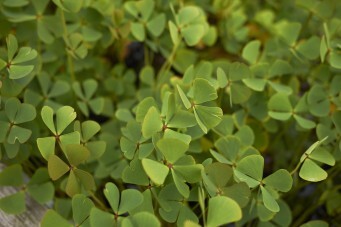
Water clover (Marsilea quadrifolia) is called the raskovnik in Slavic folklore. It is one of the most secret magical herbs. People believe that the herb has strong alchemic ability and can transform iron into gold. More common, however, is the belief the herb can brings the person who finds it love, happiness, luck, and wealth. I wish that list included eternal youth as well… Some say the raskovnik makes whatever its owner desires come true.
Only a turtle knows where the plant grows, but if a hedgehog is covered with a bowl, it can also find the herb.
According to legend, the herb can unlock any padlock or closed gate. It has the power to make buried treasures rise from the ground: it does this by splitting the ground at the place where a treasure is hidden, so that people can locate it. But if the herb breaks, it’ll lose its magical powers.
 Gray african pygmy hedgehog isolated on white background
Gray african pygmy hedgehog isolated on white backgroundIn some regions of Balkans, the treasure itself was a giant man in chains. He’d would request that a raskovnik be brought to him. The raskovnik would break the chains and the man would disappear into the ground, replaced by a cauldron filled with gold coins.
Would you like to learn more about the secret power of herbs?
We have created a book that includes more than 250 color images, medical and magical herb use, traditions, and more. Read on to find out more…
Our CampaignDiscover the power of herbs with our forthcoming book, 77½ Magical Healing Herbs. But when we publish it, the print book will be available EXCLUSIVELY through our Kickstarter campaign for six months, and the ebook will ONLY be available through Kickstarter. We have no plans to publish it through retailers due to the large file size.
What is Kickstarter? Isn’t that just like GoFundMe?
No, absolutely not. Kickstarter is a direct-sales platform that has the potential to reach millions of people. Supporters pledge various amounts to support an author, and in return, they receive products before anyone else. And, as I mentioned, sometimes this is the only way to get a product.
Kickstarter cuts out the retailer middle-man. There are fees, of course, but they are much smaller than the chunk retailers grab.
What Kickstarter is, besides a platform to sell a product, is a way to bundle rewards for supporters. It’s a way to directly interact with customers. There will be early-supporter perks for those pledging within the first 48 hours. And what they call “stretch goals,” bonuses if the campaign meets certain goals.
Are you game?
We’d love to have you check out our pre-launch page.
Simply click on the “Notify me on launch” button, and Kickstarter will send you an email immediately when the project officially launches.

When the campaign launches, it will also include a short video. You can get a sneak peek here and check out our awesome project in progress: https://youtu.be/pG5rc3qs8BI
We hope you’ll join us on the adventure and support our campaign. The book is chock full of fascinating information and fantastic images. An all-you-can-eat herbal buffet.
Hope to see you soon.
Nelly and Rebecca
Images stock photos from DepositPhotos.
April 5, 2022
Magical Healing Herbs
“On Eniovden (Midsummer’s Day), the stars fly down, infusing herbs and water with magical healing power.”
Every year on June 24, Eniovden, I remember these words spoken by my grandmother. She understood the power of herbs and used them to heal body and soul, protect the home and family, and bring fertility and prosperity to the household.
In Bulgaria and other Slavic countries like Ukraine, women and healers gather 77½ herbs. A popular belief is the herbs have magical and healing powers if picked on the eve of Eniovden. However, the women must remain silent as they pour water over the herbs, so the magic is not ruined by the human voice. The women cover the caldron of herbs with an apron and leave it under the stars overnight to make the herbs even more powerful.
“There is an herb for every illness, and the half for all unknown.”
I never fully understood the meaning of the “half” herb as a child—and not even as an adult. How can you have a half herb? Even if you break it in half, it’s still an herb. Nor did I completely comprehend the power of each of the Eniovden herbs.
From the 77½ herbs they gathered, the women weave a giant, sacred wreath. They don’t pick herbs at random. Each herb has magical or healing abilities and is specially chosen for the wreath. According to folk belief, these herbs can cure illnesses, break spells, and drive away dragons (zmeys) and other malicious entities. After the women weave the herbal wreath, they dress in colorful, traditional costumes and dance the horo before they step through the wreath to start the day’s celebrations.
“Is this a portal to another world? Is this a circle to protect you from black magic and evil spirits?”
These were questions in my mind when I looked at the colorful floral wreath on Eniovden many years ago. It was giant. I mean really giant… Woman, maidens, and girls easily stepped through the wreath. It felt like they were going to a different dimension.
It was a magical experience, one which I always wanted to learn more about.
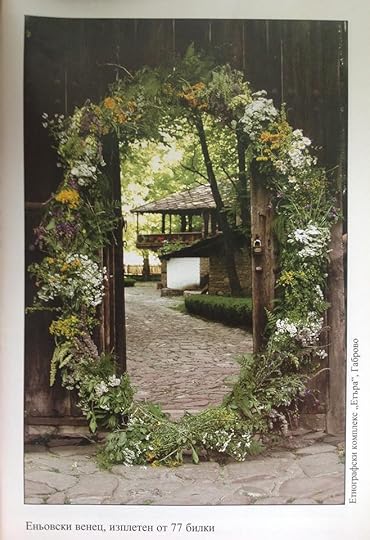
The Magic of Eniovden
June 24 is a special day filled with other magical rites that focus on herbs. In one ceremony, women and girls sing while they place herbs on each corner of a field. This ensures a bountiful harvest and prevents witches from stealing the fertility of the land, which is contained in the dew. Otherwise, witches would cast spells on the fields during the night, collect the dew in their aprons, and bring it to their own fields.
Eniovden is also a night when the boundaries between the spirit and human worlds merge, allowing creatures from heaven, earth, and the underworld to roam the land. Samodivi (woodland nymphs) and dragons celebrate on this day.

Birth of a Book
I was curious what herbs made up the 77½ in the wreath, so I researched old Bulgarian books and articles and finally discovered a list. That is how the idea of 77½ Magical Healing Herbs was born.
In this unique book, you’ll also learn about well-known healers from Bulgarian history. Baba Vanga is one whom many people these days have heard about. She’s a clairvoyant who’s been called the Nostradamus of the Balkans, and she has predicted many events that have happened in our lifetimes.
Did I get your attention? Would you love to learn more about herbs? Read on…

You can with our forthcoming book, 77½ Magical Healing Herbs. But when we publish it, the print book will be available EXCLUSIVELY through our Kickstarter campaign for six months, and the ebook will ONLY be available through Kickstarter. We have no plans to publish it through retailers due to the large file size.
What is Kickstarter? Isn’t that just like GoFundMe?
No, absolutely not. Kickstarter is a direct-sales platform that has the potential to reach millions of people. Supporters pledge various amounts to support an author, and in return, they receive products before anyone else. And, as I mentioned, sometimes this is the only way to get a product.
What Kickstarter is, besides a platform to sell a product, is a way to bundle rewards for supporters. It’s a way to directly interact with customers. There will be early-supporter perks for those pledging within the first 48 hours. And what they call “stretch goals,” bonuses if the campaign meets certain goals.
Are you game?
We’d love to have you check out our pre-launch page.

Simply click on the “Notify me on launch” button, and Kickstarter will send you an email immediately when the project officially launches.
When the campaign launches, it will also include a short video. You can get a sneak peek here and check out our awesome project in progress: https://youtu.be/pG5rc3qs8BI
We hope you’ll join us on the adventure. The book is chock full of fascinating information and fantastic images. An all-you-can-eat herbal buffet.
Hope to see you soon.
Nelly and Rebecca
April 4, 2022
Exclusive Opportunity
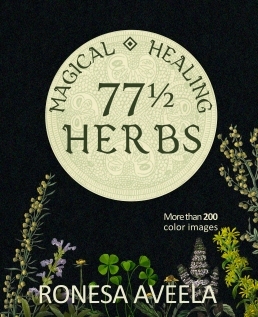 Our book 77½ Magical Healing Herbs is nearing completion. It’s currently in the hands of a graphic designer to make the pages even more compelling. A little color to make the herb photographs and text really pop.
Our book 77½ Magical Healing Herbs is nearing completion. It’s currently in the hands of a graphic designer to make the pages even more compelling. A little color to make the herb photographs and text really pop.
The book is 350 pages long! In 8 x 10 format. So, that’s a lot of herbal information.
However, the book won’t be available in any retail store any time soon.
Why?
We’re running a Kickstarter campaign, and the print book (both paperback and hardback) will be EXCLUSIVE to that platform for SIX months. And an ebook version is ONLY being offered through Kickstarter. Once the campaign is over, the opportunity to secure one will be lost.

What is Kickstarter? Isn’t that just like GoFundMe?
No, absolutely not. Kickstarter is a direct-sales platform. Supporters pledge various amounts to support an author, and in return, they receive products before anyone else.
Kickstarter cuts out the retailer middle-man. There are fees, of course, but they are much smaller than the chunk retailers grab.
What Kickstarter is, besides a platform to sell a product, is a way to bundle rewards for supporters. It’s a way to directly interact with customers. There will be early-supporter perks for those pledging within the first 48 hours. And what they call “stretch goals,” bonuses if the campaign meets certain goals.
Are you game?
We’d love to have you check out our pre-launch page.
Simply click on the “Notify me on launch” button, so you’ll be notified immediately when the project officially launches.

When the campaign launches, it will also include a short video. You can see it in advance here and check out our awesome project in progress: https://youtu.be/pG5rc3qs8BI
We hope you’ll join us on the adventure. The book is chock full of fascinating information and fantastic images. An all-you-can-eat herbal buffet.
Hope to see you soon.
Nelly and Rebecca
March 27, 2022
The Magical Walnut
On a recent podcast I listened to, one of the speakers was bemoaning the fact that walnuts were included in mixed nuts. She thought they should be excluded. Her reasoning was: Who, after all, actually eats walnuts as a treat? To which, a multitude of listeners responded that they ate the nuts as a snack, mixed with other nuts or by themselves. I include myself in that latter list.
The walnut tree is believed to have existed in prehistoric times, and has been revered through the ages both as a nutritional food and for its medicinal uses, as well as being valued as a source of beautiful wood.
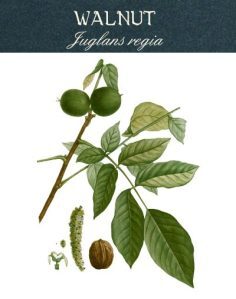
Walnut is not one of the herbs found in the Eniovden (Midsummer’s) wreath that we discuss in our forthcoming book, 77½ Magical Healing Herbs, but it is a plant that has many magical associations in Bulgarian and other beliefs. Here are a few from Bulgaria:
Walnut is a World Tree. But, unlike others, it’s unsafe to sleep in its shade. Bulgarians believe that Samodivi (woodland nymphs) and Youdi (more demonic nymphs) gather under the trees. If they discover you there, they’ll make you become ill.Also, as a World Tree, the walnut is a passage from this world to the world of the afterlife. On Pentecost, women place the leaves on graves, so the spirits who are wandering can find their way back to the land of the dead and give them peace. Anyone who wants to see or hear their deceased loved ones brings walnut twigs to church and kneels on them.On Christmas Eve, walnuts are used to predict one’s health for the year. A plump white nut means good health and happiness, and one with two cores is lucky. The finder must make a wish and toss it over his left shoulder. On the other hand, if the nut is shriveled, the person will suffer illness and have bad luck for the year.Walnut leaves can also keep dragons and Samodivi away.Other beliefs include the following:
Walnuts attract lightning, so don’t carry one during a thunder storm. At all other times, it’s okay, because it will strengthen your heart and keep the pains of rheumatism away.Being given a bag of walnuts means all your wishes will be fulfilled. However, don’t eat them if you are allergic.A woman, on her wedding day, can place roasted walnuts in her bodice, so she remains childless. Each nut she carries corresponds to one year of not getting pregnant.Walnuts are associated with expansion, whether it is a career, finances, or perspective on life.Spending time around a walnut tree can give a boost to your immune system.If you’d like to know more about walnuts, sign up for our newsletter with the link below, and you’ll receive a fact sheet that includes historical, medical, and magical uses. It follows the format of the herbs we describe in our forthcoming herb book: 77½ Magical Healing Herbs.
Link to “The Magical Walnut” download: https://storyoriginapp.com/giveaways/90557b10-add4-11ec-970f-5f52fecbf598
March 11, 2022
The Healing Bogomils
This is an excerpt from our forthcoming 77½ Magical Healing Herbs book.
~~~
Bogomilism is a unique moment in Bulgarian history, originating during the tenth century, although the period of the sect’s history is shrouded in darkness by both the Church and the Communists. Bogomil (singular) is a word that means “dear to God,” from the Slavic Bog (God) and mil (dear). The sect believed in personal spiritual knowledge rather than adherence to Orthodox teachings. Many of the written works of the Bogomili (plural) were destroyed as heretical and controversial, because of their views about both Satan and Christ, among other things. New studies and publications about Bogomilism, however, have emerged in recent years.
There is more to Bogomili than their suppressed viewpoints. They were famous anti-feudal reformers and freedom-loving preachers. They believed in self-government, common ownership of goods, and equality of all community members. They brought literacy to people by writing books in native languages, rather than the Latin prescribed for Church documents. And they encouraged their followers to think and interpret everything they heard or read. All these ideals made the Bogomili dangerous to the feudal society they lived in, and they were persecuted and burned at the stake as witches.

Bogomili – Illustration copyright Keazim Issinov (used with permission of the artist)
More important to the topic of this book, Bogomili were great healers. Vasiliy Vrach, a medieval physician and Bogomil leader, is credited with being the creator of the Bogomil healing practice. The people lived in harmony with nature and used herbs and natural remedies to cure diseases. They believed that diseases had a bad origin, from Satan and other dark, supernatural forces like vampires, Rusalki (water spirits, often called a mermaid), and Samodivi. These beliefs are preserved today in various Bulgarian rituals.
Bogomili were averse to alcohol. According to them, it was an open door to all other sins and betrayals, the devil’s work created to corrupt and kill the spirit. They preached the avoidance of meat, and the higher officials in the group gave up animal products altogether. The people led a life that embraced the natural rhythm and healing properties of foods and herbs. According to them, this way of life prepared them for a spiritual rebirth.
In recent times, a Bulgarian healer called Emil Elmazov discovered a Bogomil recipe book called Zeleinik (Зелейник), which describes natural healing procedures, summarized into five practices: prognosis, herbal treatment, fluid treatment with four liquids, narichania (old Bulgarian rituals in which the ill person participates), and magical rites. The treatments include using herbs, milk, honey, wine, and other ingredients. Even today, honey is a popular homeopathic remedy in Bulgaria and has its roots with the Thracians.
But the cures didn’t stop there. Prayers and invocations were also essential. In addition, it was important for the healer to hold back all emotions, both those of excitement and anguish, in order to maintain his life energy for healing. This simple but important rule must have been difficult to achieve for people who choose medicine for a career. As we say, no one can drink from an empty cup.
February 11, 2022
March, the Moody Month
March will be here before we know it. March 1 is Baba Marta Day, one of the most popular holidays among Bulgarians. It’s a time to show friendship and wish each other health throughout the year. People make martenitisi, a charm bracelet, from red and white thread to give to others. The day is in honor of Baba Marta, Grandmother March. She’s the only female month, and her mood is reflected in the changeable weather those of us in the northern hemisphere experience as spring attempts to arrive.
This month, I’d like to share a memory about Martenitsa from my memoir, The Wanderer – A Tear and A Smile.
~~~
Sometimes, we need a sign or a miracle to encourage and empower us. As Oprah Winfrey likes to say, “Life is whispering to us; we need to listen.” It’s important to understand the signs and follow our intuition.
Years ago, on a gloomy, rainy spring day, I was dragging my feet with a bowed head, absorbed in personal and work-related problems that stifled my soul. I was in Boston Public Garden; I didn’t see or hear anything because I was so closed off inside my world. Anger tightened my throat, and my coat weighed me down like iron.
Then, in the distance, I saw a flower perched on the bare branches of a tree. It danced like a butterfly. When I came closer, I noticed that it wasn’t a flower; it was the traditional Bulgarian amulet called martenitsa. I knew for certain because it wasn’t any random martenitsa, but Pijo and Penda, the boy and the girl made with red and white threads.
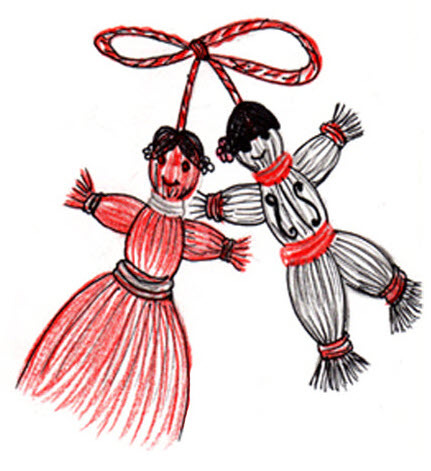
For the people passing by, this amulet meant nothing. But for me, it was a ray of light penetrating the clouds. I felt that somewhere near me, someone shared my cultural beliefs. Someone had put the martenitsa on the branch hoping for health and good omens. People going by were walking their dogs, chatting, and taking pictures. I stopped to look at their faces, hoping to spot the person who might have put the amulet there. I was looking for a sign. Perhaps the person would come back and touch the martenitsa.
People smiled at me, and a group of cheerful girls stopped to touch the martenitsa, but they didn’t know about it. They didn’t even know where Bulgaria was, but I expected that. I proudly described what it meant and the history of the amulet. They looked puzzled. One of them said she thought it was the Kabala Amulet or a sacral ritual. They took some pictures and went back to their own world. A little birdie was singing its song at the top of the tree; I felt it was talking to me to cheer me up and help me embrace the day.
The wind blew away the clouds, and the sun bloomed over the branches covering them and the martenitsa with gold. A few sparkling drops of water trickled down from the branch onto my hair and face. I wiped my cheeks with my palm and felt refreshed from their cold touch. The sun shone and tickled my face. Although I wore several layers of winter clothes and held my laptop bag, I felt as light as a feather, ready to fly in the breeze. I left the garden, turned a few times and still saw the boy and the girl dancing on the branch.
On my way home on the train, I looked out the window and kept my eyes glued to the last sun rays. The day was gone, but I had hope that tomorrow would be better. The martenitsa for me was a sign, a sign to embrace the positive in anticipation of a new beginning from the universe. As Byron says, “O, wind, If winter comes can spring be far behind.”
In Bulgarian folklore and traditions, the martenitsa is a symbol of the coming of spring and of new life and new beginnings. Several legends describe the origins of this amulet. I’ll tell you one that’s in my book Light Love Rituals: Bulgarian Myths, Legends, and Folklore. The tale is about Penda and Pijo, the girl and boy I found dancing in the wind.
Penda and Pijo StoryA long time ago, a Tsar named Pijo loved a woman named Penda. When Pijo found out she had been kidnapped, he wanted to search for her, but he couldn’t leave his kingdom. He sent carrier pigeons with messages asking his loyal subjects if they’d seen Penda. He also asked a brave, trusted soldier to look for her. The man left on a hot summer day and searched for her well into winter.
Far from his homeland, he met an old woman and eleven old men sitting on the cold ground by a well. The old woman struggled to rise, so the soldier helped her, then lifted the bucket of water from the well to give her a drink.
She said, “I’m Baba Marta (Grandmother March), and these are my brothers, the other eleven months of the year. Because you’ve been kind to me, you’ll find what you’re looking for.”
Soon the soldier discovered the house where Penda was held prisoner. He untied her and was going to take her home, when the man who kidnapped her returned. They fought for many hours. The soldier tired and feared his strength would fail. He jabbed once more and killed the bad man, then collapsed. Penda gave him a drink of water.
“Our journey back will take a long time,” she said. “I must let Pijo know I’m safe.” She wrote a note and placed it inside a tube. With a white thread, she tied it to the leg of a carrier pigeon Pijo had sent, then released the bird.
Along the way, the bird scraped its leg on a branch. Blood had stained the thread by the time the bird finally reached Pijo. When he read the note, he was so happy. He tied the blood-stained thread to his shirt until Penda returned safely.
~~~
That’s one story about why we use red and white to make martenitsi even today. There are many others.
Those Pesky InsectsSpring also means the arrival of insects. In our current work in progress, 77 ½ Magical, Healing Herbs, we’ve discovered several plants that are insect repellents.
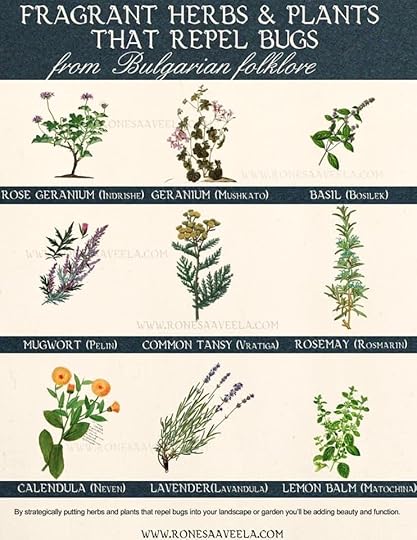
But more than that, there’s also a plant that kills mosquitoes and their larva. It’s called Shepherd’s Purse (Capsella bursa-pastoris). Its seeds are sticky. A way to get rid of mosquitoes is to toss seeds into the water where mosquitoes breed. The seeds not only emit a substance toxic to the larvae, but they also attract mosquitoes. The sticky, gummy substance binds the mouths of the mosquitoes to the seed.
Happy Baba Marta Day! Blessings and happiness to you all.



